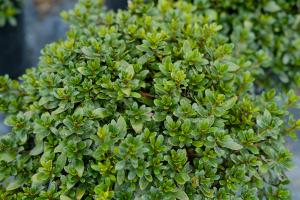How Often to Apply Epsom Salt to Tomato Plants
Tomato plants are a popular choice for gardeners who love fresh, juicy tomatoes. To help ensure healthy and vibrant plants, many gardeners turn to Epsom salt as a natural fertilizer. But how often should you apply Epsom salt to your tomato plants? In this article, we'll explore the benefits of Epsom salt and provide guidelines for how frequently to apply it to your tomato plants.
What is Epsom Salt?
Epsom salt is not actually salt but rather magnesium sulfate. It is named after the town of Epsom in Surrey, England, where it was first discovered in mineral springs. Epsom salt is a natural compound that contains magnesium, sulfur, and oxygen. Its chemical formula is MgSO4?7H2O.
Benefits of Epsom Salt for Tomato Plants
Epsom salt can be a valuable tool for tomato gardeners because it contains two important nutrients that can help promote plant growth and fruit production: magnesium and sulfur. Magnesium is an essential nutrient for plant growth, and it helps plants to produce chlorophyll, the molecule responsible for photosynthesis. Sulfur is also important for plant growth because it helps to create amino acids, which are the building blocks of proteins.
In addition to its nutrient content, Epsom salt has other beneficial properties for plants. When dissolved in water, it can help to improve soil quality by reducing soil alkalinity and increasing the availability of other nutrients like nitrogen and phosphorus. It can also help to deter pests like slugs and snails.
How Often to Apply Epsom Salt to Tomato Plants
While Epsom salt can be a useful fertilizer for tomato plants, it's important not to overdo it. Applying too much Epsom salt can lead to a buildup of magnesium in the soil, which can interfere with the uptake of other nutrients by the plant. It can also cause the soil to become too acidic, which can harm the plant.
A good rule of thumb for applying Epsom salt to tomato plants is once a month during the growing season. This will provide the plant with a steady supply of magnesium and sulfur without overwhelming it with too much of either nutrient. To apply Epsom salt, simply mix one tablespoon of Epsom salt into one gallon of water and apply the solution to the soil around the base of the plant. Be sure to water the plant thoroughly after applying the Epsom salt solution.
In conclusion, using Epsom salt as a fertilizer for your tomato plants can help to promote healthy growth and fruit production. By applying Epsom salt once a month during the growing season, you can supply your plants with the nutrients they need while avoiding the risks associated with overuse. Happy gardening!

 how many times do yo...
how many times do yo... how many planted tre...
how many planted tre... how many pine trees ...
how many pine trees ... how many pecan trees...
how many pecan trees... how many plants comp...
how many plants comp... how many plants can ...
how many plants can ... how many plants and ...
how many plants and ... how many pepper plan...
how many pepper plan...
































